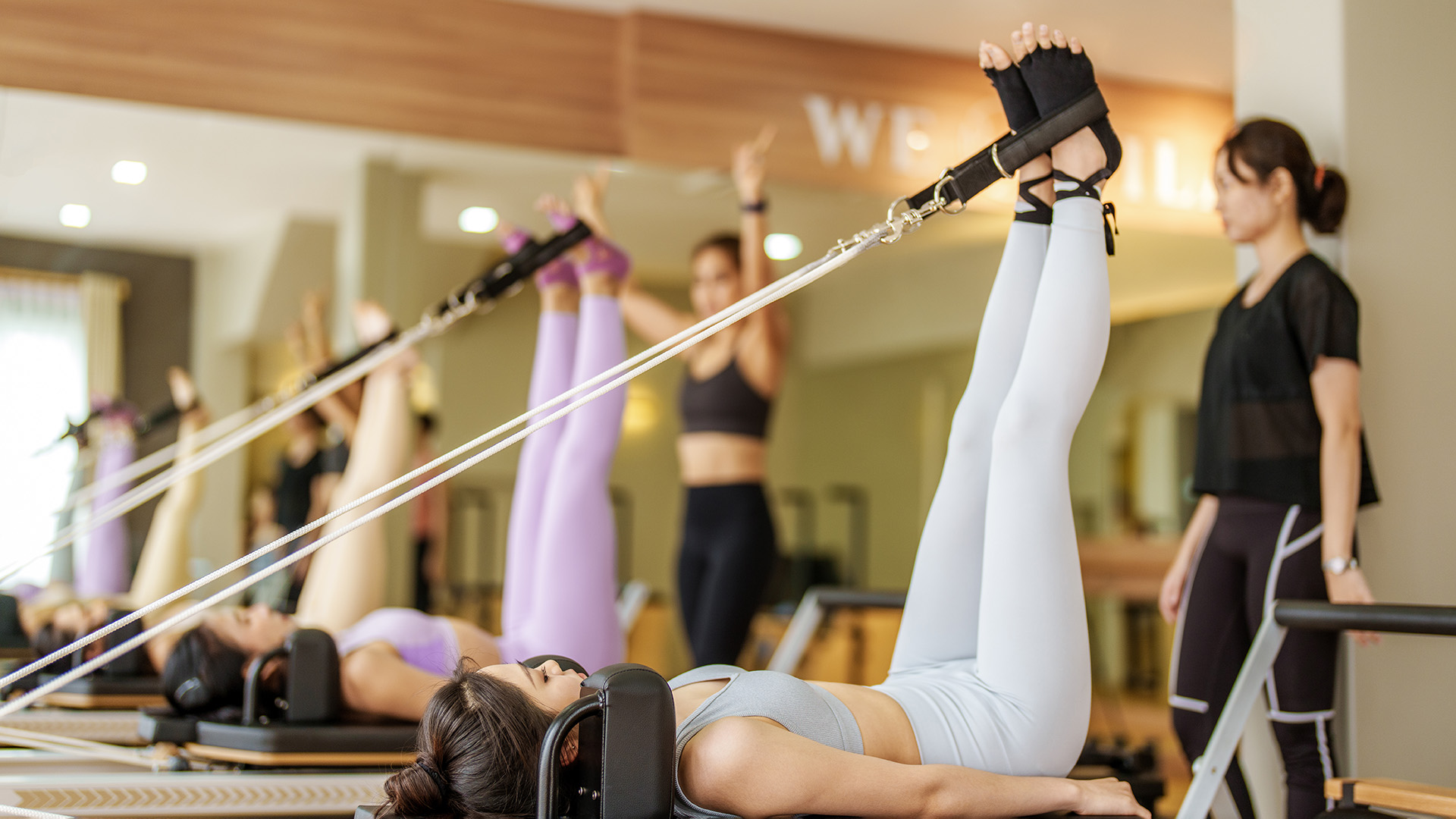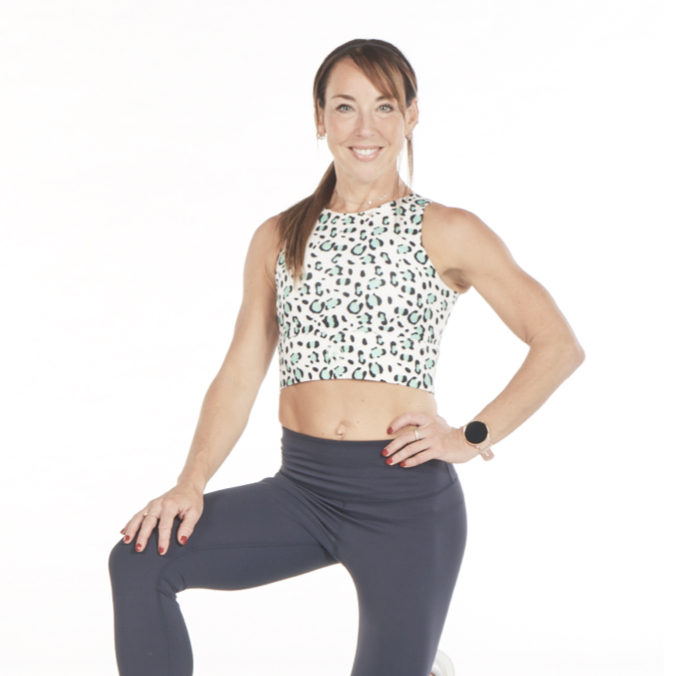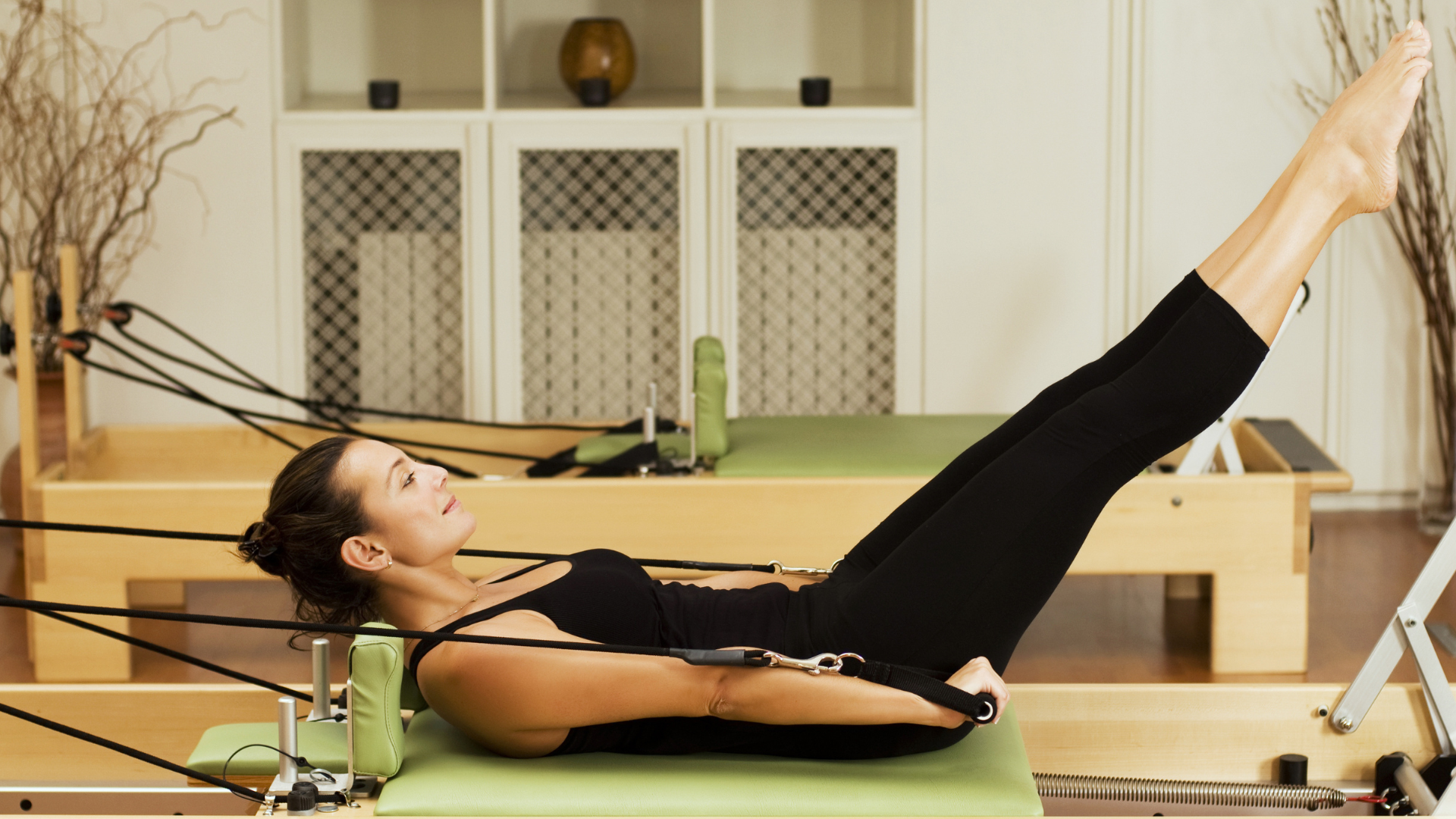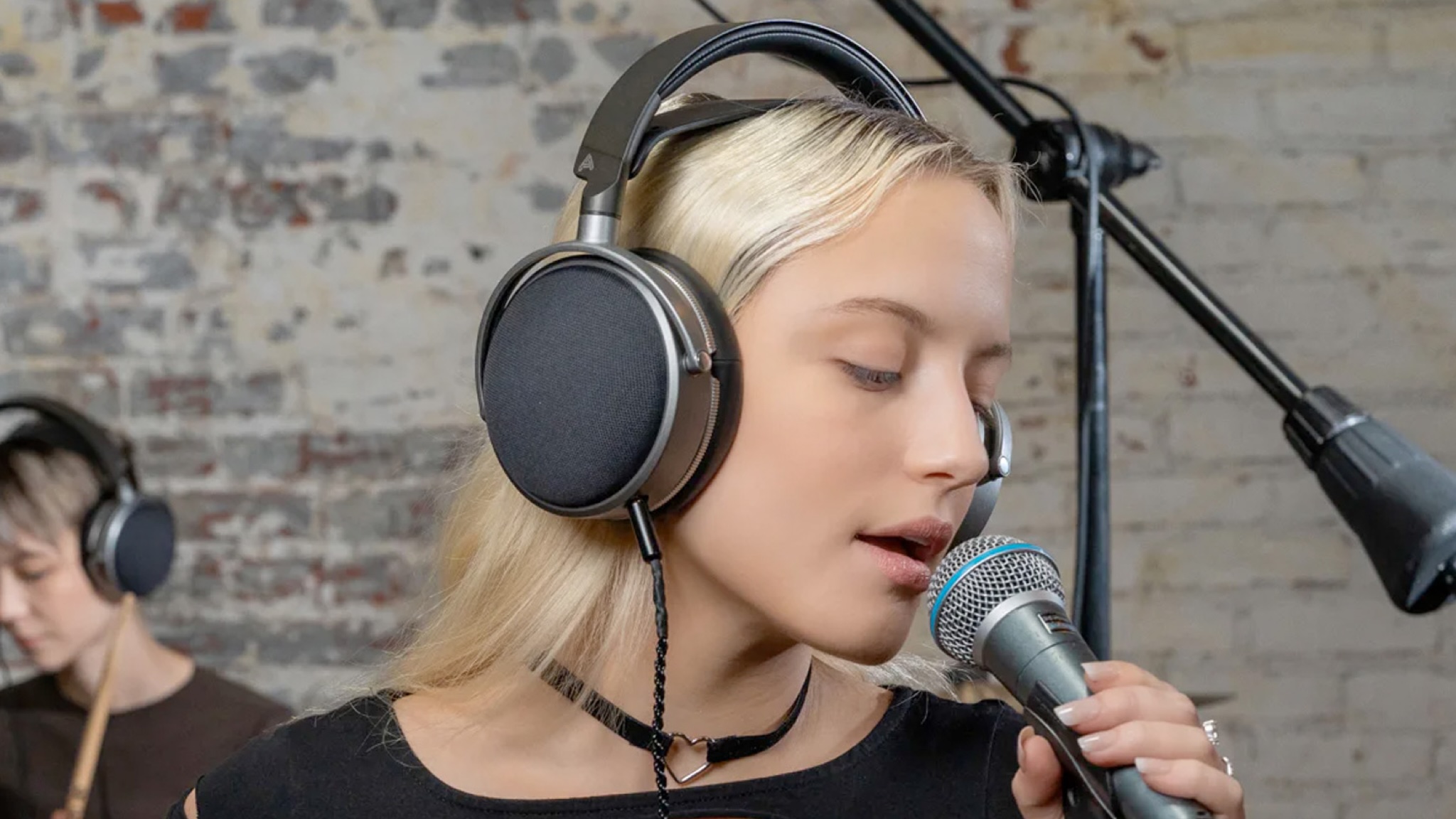

I remember walking into my first class – no offence to Pilates lovers – and feeling a bit lost. No clanging of heavy barbells. No woodland trails to sprint down. Instead, I looked at the chandeliers on the ceiling as my reformer bed slid up and down. Up and down. Why did I sign up again?
"There is something about Pilates, the reformer bed, the body weight and the neuromuscular connectivity that makes it easier to connect with your body over training with traditional weights," says Personal Trainer Mark Radio, which made me think I should give Reformer Pilates another try.
I’ve been intrigued by the recent Pilates hype for a while now. Not only have I read a ton about it on celeb websites and while scrolling through my social media, but there are now five reformer boutique studios in my area (with hefty signup fees, I must add). They are all knitted out beautifully and very Instagram-worthy.
What gave me the confidence to keep going is that Pilates seems to be so much more than just a fad. After all, professional athletes use it for cross-training. So I gave it a go. I ditched the gym for a week and did reformer Pilates instead. This is what I found.
My first reformer class
Like any form of fitness. It’s never too late to start Pilates. My first class was with six others and people from all walks of life. Older, younger, men, women, the more athletic looking to post-natal mums. The beauty is you work at your own pace.
First things first, though, we need to get used to the reformer bed. Shauna, our teacher, showed us where the springs are. Unlike traditional mat Pilates, which relies solely on body weight for resistance, the Reformer adds an extra challenge by incorporating spring resistance.
This means you can adjust the intensity of your workout by simply changing your spring. There are five to choose from - and they’re all colour-coded. We start with the red and blue springs attached. You also have a pair of pulleys, which we hook our hands into and our feet for certain moves, as well as a foot bar.
Sign up to the T3 newsletter for smarter living straight to your inbox
Get all the latest news, reviews, deals and buying guides on gorgeous tech, home and active products from the T3 experts
We have a block and a Pilates ball too; both additional props that we use throughout the hour to make certain exercises more challenging - and sometimes easier.
The first five minutes involve lying down on our backs with two springs hooked on for resistance and a Pilates ball squeezed between our legs. We go through the necessary protocols of scooping in the abs and engaging the core before pushing our feet into the foot bar to straighten our legs—a bit like a leg press.
I can already feel the added resistance of the reformer bed as I push the carriage up and work against gravity to control it on the way down. After 15 reps or so, I feel a deep burn in my quads, inner thighs and glutes - it’s hard but in a slow and targeted way.
I try to embrace the moves and the calm while breathing into the slow burn. It’s a mental game for me, but I stick at it as we move through planks with our elbows on the block and lunges with our back foot on the bed. We push the rolling carriage back behind us and lower our front leg into a lunge.
It’s slow and uncomfortable, and my thighs are shaking.
I complete the 55-minute class and walk out feeling like every muscle has been worked—and my flexibility—as we end the session with our feet in the straps and circle our legs out and wide. It’s certainly different.
I’m glad I have built up good body awareness over the years and can move like I do. For my next session, I'm signing up for the mixed abilities class. The beginners class was a great taster, but I’m ready to step it up a notch.

My second class
Walking into my second class at Power Pilates UK (retailer link), little did I know that I had signed up for an Intermediate/advanced class. While observing me on the reformer bed, Shauna asked if I lifted weights. Thinking she was talking about my muscle tone, she actually commented on my diagram and said I needed to work on ‘unpuffing’ it.
To do this, I lowered my rib cage and stayed extremely mindful as I breathed my way through the slow, precise movements. Within the first ten minutes, we had performed dead bugs (knees up at 90 degrees) plank to pike where we side the carriage out and in in an extended plank as well as lateral woodchops and side planks.
My core muscles are screaming as well as my shoulders and obliques.
During the class, we also worked on the legs with lunges and glute bridges. How did I feel afterwards? Physically drained—an internal exhaustion that’s hard to explain. On a more positive note, I enjoyed it and feel more motivated to go again. This feeling leaves me feeling not so bad about swapping my usual gym session for the class.
I also like the fact that Pilates is giving me a week off my usual routine without too much impact on my joints. I’m definitely one to pound my body with running and lifting, but I feel happy knowing that these classes are strengthening my joints and my surrounding stabilizing muscles without putting them under any pressure. Cross-training and giving certain movement patterns some recovery time will never do any harm.
The next week
Although slow-moving, the one thing reformer Pilates has done this week is force me to slow down.
I jumped from the beginners class straight into the intermediate/advanced, but each exercise in the class is focused, and the instructors at the classes are all for checking on the quality and control of each move as we work muscles through high reps for longer periods — known as endurance training.
After every class my muscles are completely drained and shaky - but in a different way to the gym. I’m certainly aware that I work my muscles differently from what I’m used to, and I’m soon used to the classes and the instructor's way of teaching. It’s a small class and a happy little family.
I can see why people come back. I see my body progress through the week, and it feels nice to lengthen and feel muscles work that I haven’t felt for a while - especially the very deep core muscles that leave me taking long and deep “I can’t hold this any longer” breaths as we finish each session with a slow core flow.
Reformer Pilates – yay or nay?
After a week off the gym and doing Pilates sessions instead, will I be going back to the gym? You bet I will. Although reformer Pilates works the whole body without the impact and strain of weights and running, I’m not a complete convert.
Firstly, it takes time. You have to find a class, travel to the class, and do the class. Unless I’m getting a life-changing workout, I just don’t have the time.
I also found it pretty lonely. Despite being in a class with others, there’s very little interaction. If I’m doing a class, I want to bounce off others, do some partner work, and race against the person next to me.
Pilates, on the other hand, is a very good time to think and go inward. It enhances concentration but also reduces stress and promotes relaxation. I liked the challenge it placed on my deep core muscles and the way I had to integrate my breath with movement.
This helped me tremendously when it came to regulating my breathing during HIIT and hill sprints. It also stretched my body from head to toe—something we often skip at the end of a gym session to rush home for tea.
I haven’t written off Pilates. There’s no doubt about it: the reformer is a brilliant way of developing a strong core and strengthening the muscles in your hips, quads, glutes, and shoulders. It’s also great for building power, flexibility, balance and better posture, which all make for a more functional and efficient body.
I’ve made a promise to myself to do a class once every few weeks to help keep things ticking. In the meantime, I will continue with the gym 5-6 days a week and keep experimenting with all the kit, such as kettlebells, skipping ropes, cable machines, and the like. I may even incorporate some of the Pilates exercises every now and then.
I won’t benefit from the instability of carriage, but I’m pretty sure I can replicate some of the moves on the TRX and the gym ball in between classes. I’ll give it a good go anyway.

Lucy Miller is a journalist, Level 3 Personal Trainer, Nutritional Advisor and Children’s Fitness Specialist. She holds fitness qualifications from NASM Training and Premier Training International and has been a fitness journalist and fitness (and cover) model for over 20 years. Since going freelance in 2014, Lucy left Men’s Fitness Magazine to write for an abundance of top consumer titles such as Women’s Health, Women’s Fitness, Waitrose, The Times, The Guardian and Runners World.
She’s also extremely passionate when it comes to educating others about health and physical activity and loves inspiring and working with children and adults to help make fitness fun, sustainable and accessible. In her spare time, Lucy is ever the sportswoman. Once a national gymnast, having won three national titles, she has also run a handful of marathons around the world and loves to test her physical and mental side with daily running and gym sessions, not to mention ballet, bootcamp, boxing and TRX.
-
 Audeze’s new planar headphones promise studio-quality sound without a sky-high price
Audeze’s new planar headphones promise studio-quality sound without a sky-high priceThe new LCD-S20 closed-back headphones are Audeze's most affordable premium planar headphones yet
By Carrie Marshall Published
-
 Shark launches its smallest NeverChange Air Purifier yet – but it’s still just as powerful
Shark launches its smallest NeverChange Air Purifier yet – but it’s still just as powerfulShark reinvents its NeverChange Air Purifier in a new compact size
By Bethan Girdler-Maslen Published